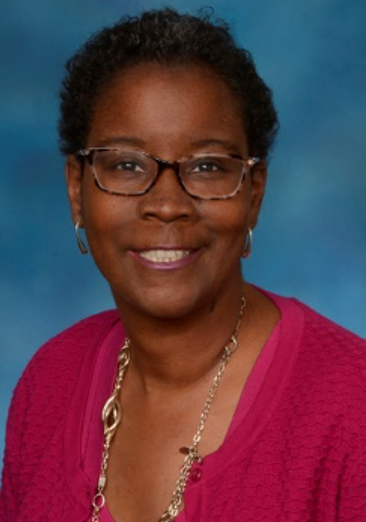UMB CURE DONOR SPOTLIGHT: DARLENE ROBINSON, MD
 As an emergency medicine physician affiliated with multiple hospitals in the West Baltimore area, Darlene Robinson, MD, truly understands the importance of addressing the social and environmental barriers that affect the West Baltimore community she serves. Robinson is a CURE Advisory Board member and believes supporting STEM education can help improve outcomes for students in the UMB CURE Scholars Program.
As an emergency medicine physician affiliated with multiple hospitals in the West Baltimore area, Darlene Robinson, MD, truly understands the importance of addressing the social and environmental barriers that affect the West Baltimore community she serves. Robinson is a CURE Advisory Board member and believes supporting STEM education can help improve outcomes for students in the UMB CURE Scholars Program.
How did you get involved with the UMB CURE Scholars Program?
I heard about CURE through colleagues at UMB. Once I learned about the program, I immediately felt connected to CURE because of its mission and its relation to my current community outreach efforts.
Why do you support the UMB CURE Scholars philanthropically?
My mom was a teacher, so I always understood the value of education and exposure and, more importantly, the power of those things to influence your passions and dreams. I love that I have the opportunity to expose students in the UMB CURE Scholars Program to opportunities and resources that can inspire a passion within them.
Are there people in your life who have modeled philanthropy or particularly encouraged you to give back?
I grew up in Crisfield, Md., a rural town on the Eastern Shore. My family wasn’t rich so we couldn’t always give back monetarily, but we were always involved with giving back to our community through the church. For that reason, community outreach is very important to me. My mother is 85 years old and still volunteers at a local hospital, even today! I grew up in an environment where people regularly gave back to their community, and now I’m in a position to do the same. I received a scholarship to medical school and now I feel obligated to help students strive toward educational attainment.
What do you think is the most effective way to introduce people to the UMB CURE Scholars Program?
What works best for promoting a program like CURE is effective messaging and continuous exposure, especially to UMB students, faculty, and staff. I love that the CURE team utilizes the e-boards around the University and often attends various seminars to introduce the CURE Scholars Program to the different student organizations at UMB. I would also suggest reaching out to different departments across the University to explore the possibility of a CURE representative attending staff meetings to get CURE’s mission and message to every department at UMB.
In the end, Robinson beautifully sums up the idea that representation truly does matter. As a girl growing up on the rural Eastern Shore, she often noticed that not many people who looked like her attended medical school. As a result, she hadn’t considered a career in the medical field. However, with early exposure to STEM subjects and educational support, Robinson went on to become a prominent physician in Maryland. She articulates the importance of equal representation in medical careers and its influence on our next generation of scientists, researchers, and physicians. She challenges UMB CURE Scholars to dream big and be confident in themselves. After all, they are the leaders of tomorrow.


